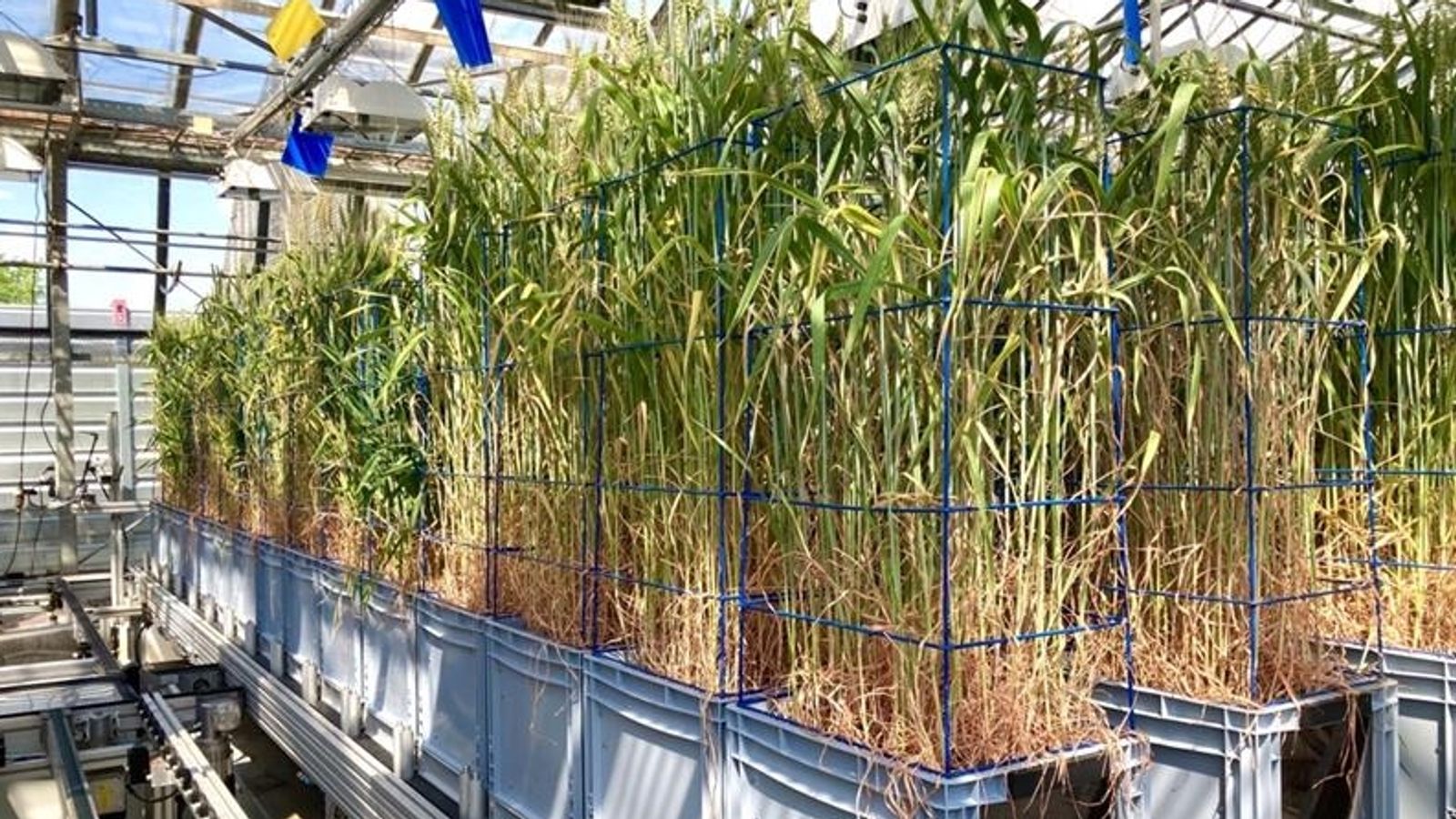Moving Fields is the name of the greenhouse of the Bavarian State Research Center for Agriculture in Freising, because the small fields of grain in plastic bins move back and forth through the greenhouse several times a day. It’s a bit reminiscent of turning beer crates – nicely planted with decorative greenery. But what happens in this greenhouse is botanical research. On their journey, cereal plants are weighed, fertilized, photographed over and over in a picture box, and watered at another station—or not.
Wheat is deliberately deprived of water
This research project has been around for nearly ten years. The goal: to raise crops suitable for climate change, whether potatoes, barley or wheat.
Each box contains 30 plants, which are sown with a similar density to the outside in the field, called young fields. The computer decides how much water the box gets. Dr. Marcus Herz is in charge of the project: “We deliberately refuse water to some plants and we can trace the reaction of both the roots and the above-ground growth even today.”
Wheat with rye genome
This year there are very special cereal plants in the greenhouse at Freising: varieties of winter wheat into which parts of the rye chromosomes have been introduced through regular and conventional breeding, 20 different strains. “Because rye is a low-stress plant, we are trying to see if this percentage of the rye genome in wheat has an effect on the reaction to drought stress,” explains project leader Hertz.
Growth is also recorded daily with the camera
The heart of the moving fields system is a camera hidden in a large box through which the boxes regularly pass on their way through the greenhouse. The camera takes pictures of each box containing the wheat flour field each day: once in 3D, from above and below. All boxes have a sheet of glass on one side, through which you can see the root growth. Using special software, Herz scientists can evaluate the images, and there will be about 350,000 by July.
It may still take a while until the Super Squad.
But the “dry out” property alone is not enough. “The goal is a breeding line that is drought tolerant and also has good yield and is as pest resistant as possible,” says Markus Hertz. “I suppose we won’t find great diversity here, but interesting crossover partners.” Then you can continue breeding. However, according to plant breeders from Freising, it will be eight to ten years before growers have a new certified variety at their disposal.

“Total coffee aficionado. Travel buff. Music ninja. Bacon nerd. Beeraholic.”







More Stories
A NASA research team detects the atmosphere of a rocky exoplanet for the first time
New study: Warp drive possible
Outlook: The prevalence of malaria is shifting